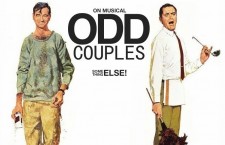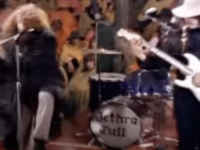Black Rebel Motorcycle Club emerged in 2013 with their long-awaited Specter at the Feast studio project, this group’s most realized album yet. The journey there, however, was simply epic.
An American rock band from San Francisco, California, now based in Los Angeles, Black Rebel Motorcycle Club have long been known for their garage rock, blues, folk revival and neo-psychedelic sound. Principal influences include the Brian Jonestown Massacre, the Rolling Stones, Oasis, T. Rex, the Velvet Underground and the Jesus and Mary Chain in a career that goes back to their formation in 1998.
It all began with Peter Hayes on vocals, guitar, bass, synthesizer and Robert Levon Been on vocals, bass, guitar and piano. The band was originally named after Marlon Brando’s motorcycle gang in the 1953 film The Wild One. The two founding members met in high school in the Bay Area. Hayes was a former member of the psychedelic rock band the Brian Jonestown Massacre. All they required at that moment was a drummer. They met Nick Jago, a student of fine art at the Winchester School of Art. He was from Devon, England and had moved to California with his parents. Black Rebel Motorcycle Club was complete when Jago joined.
They came into the picture, as Allmusic.com’s Bryan Thomas argued, just when they were needed the most — at the peak of the alternative-metal and post-grunge movement. Black Rebel Motorcycle Club’s classic hard-rock sound mixed with slowly paced psychedelic and space rock and noise pop was the perfect counterpart to the bands of the day. It sounded very British, a combination of bands like the Jesus and Mary Chain and the Stone Roses. However, their over-amped guitar sound and the pounding drums were clearly influenced by bands such as the Velvets or the Stooges. Their lyrics could be very dark at times, but also very uplifting.
Black Rebel Motorcycle Club made an impressive debut in 2001 with their self-titled album being surprisingly successful in Europe and the USA. Their brand of psychedelic rock combined with T. Rex glam sound gave rock a new meaning, as people were looking for something new. The best rocker on the album, “Whatever Happened To My Rock ‘N’ Roll (Punk Song),” would have felt at home on My Bloody Valentine’s Isn’t Anything. The strength of their debut album clearly differentiates them from rip-off artists. “Love Burns,” the opening song and the second single, has that old rock ‘n’ roll sound with a striding guitar feel. It is an excellent rock album. When it is loud and angry, it reminds you of what rock is all about. Even on a quieter tune like “Salvation,” the strength is still there.
After two years of successful touring, Black Rebel Motorcycle Club was ready for a new album. This time they would even top their already brilliant debut. This garage rock band, as Allmusic.com’s MacKenzie Wilson asserted, was still aiming to save rock ‘n’ roll with its sophomore effort Take Them On, On Your Own. An album even more aggressive, and more dynamic than their first one, Take Them On has a fearless sound. Its dozen tracks are all, Wilson wrote, “swagger, emotive, and cool” — adding that the swanky guitar riffs and the hypnotic drumming on “Stop” and “Six Barrel Shotgun” are classic BRMC. On just their second album, they already had the maturity that most of the young bands lack on a creative level, Wilson argued.
But all the success and the good notices couldn’t hide the internal problems that began to surface, especially Jago’s alcohol and drug abuse was getting out of control. When you want to function as a band you have to make a choice, so theirs was to fire Nick Jago.
After two successful albums and raving concerts that were praised by the press, dark clouds were hanging over the BRMC universe. They were also dropped by their record label, Virgin. The garage-rock revival, sparked by bands like the Strokes, or the Vines, was also slowly but surely fading. So what to do now?
First, Black Rebel Motorcycle Club took a short break, and during that time Jago was able to bounce back and he was considered clean. The record label RCA took them under contract. After a difficult period, there was finally light at the end of the tunnel. They went back to the recording studio with Jago, and emerged with the album Howl in 2005. And somewhere in the middle of all this they completely changed their sound.
Howl sounds like the work of an entirely different band. Everything which made them popular was gone. No more rock ‘n’ roll, no more noise rock in style of the Velvet Underground and the Jesus and Mary Chain. As Allmusic.com’s Tim Sendra noted: “The band embraced classic American music — namely country, blues, and gospel.” Instead of aggressive rock and phrases, a light touch and this newfound sense of drama and arrangement seem to have come out of the blue.
Additional recording assistance was given to T-Bone Burnett — and, perhaps with his name on it, everything makes a bit more sense. This album is full of gospel choirs, country, acoustic guitars, harmonica, and slide guitar. You get the feeling of a band sitting on the front porch of their ranch, while recording this album. Tracks like “Still Suspicion Holds You Tight,” “Devil’s Waiting” and “Complicated Situation” have a lightness that their previous tracks never achieved.
One of the biggest surprises is that both Peter Hayes and Robert Been’s voices perfectly fit that kind of music. They sound “sincere and gritty,” as Sendra argued, “but never strained.” And as they have a lot of gospel on the album, it looked like they had also found religion. Sendra also noted that nearly half of the songs revolved around God, the Devil, sin, and salvation.
For some fans, it was a shock and a kind of betrayal. They asked themselves what had happened to their rock ‘n’ roll band. But if you are open-minded and if you want “thoughtful and passionate,” as Sendra wrote, “but still lively and realistic” music, then give Howl a shot. Black Rebel Motorcycle Club needed this radical change, after all the turbulent times that were finally behind them, and instead of making another rock ‘n’ roll album — which might have sounded artificial — they produced an honest-sounding record.
After their sound change, they came back in 2007 with Baby 81 — and it was again time for the big rock ‘n’ roll show. It looked as if Howl was nothing more than an experiment. Baby 81 was instead full of big, noisy, crunchy guitars and a punching drum sound. Still, just because they went back to their roots didn’t mean that this was a triumphant return. Sendra argued that it was more like an over-polished, over-thought, and under-inspired record. All the courage Black Rebel Motorcycle Club had displayed throughout Howl — which was filled with solid and emotional songwriting — is often replaced with nothing more than a big sound. Nothing against that sound, but it feels as if the record company forced them to make a rock album again, when they were not ready for it. It’s in an embarrassing haze of forgettable songs and missed opportunities. Sendra notes that even the few tunes that start off promisingly, like the moody “All You Do Is Talk” or “Am I Only,” are ruined by the bombastic production.
It was a difficult time for Black Rebel Motorcycle Club, as Jago also relapsed again. This time, he left before they had a chance to fire him. In addition, they lost their contract with RCA.
After the failure of Baby 81, they did something which seemed crazy at the time, but looking back it was quite a clever thing to do: In 2008, they released the completely instrumental The Effects of 333 via their new record label Abstract. Pure background noise, the album was (in their own words) offered with “no apologies, no lyrics, no regrets, just abstract.” It’s difficult to believe that anyone, apart from paid reviewers, could be inspired to listen to it more than once. You might compare this nonsense record to Lou Reed’s Metal Music Machine.
Yet, after letting our anger out, Black Rebel Motorcycle Club seemed reborn on 2010’s Beat the Devil’s Tattoo. They finally found the perfect balance between their rock ‘n’ roll roots and the Howl sound. Danish female drummer Leah Shapiro joined the band as a permanent member, as she had already been a touring member since Jago’s departure.
With an overall sound that seems inspired by mixing old-time blues with Black Rebel Motorcycle Club’s melodic but noisy rock ‘n’ roll, there is a driving wild intensity to a lot of the tracks on Beat the Devil’s Tattoo. While the title track has folk elements that nod towards Howl, “Conscience Killer” is a rocker, more in line with their debut. The Hank Williams-like “Sweet Feeling” contrasts starkly, as does the folk ballad “The Toll.” Beat The Devil’s Tattoo was thick, deep, and rich. Finally, Black Rebel Motorcycle Club had established its own sound.
After an extensive tour, Black Rebel Motorcycle Club needed a break. So one wouldn’t hear anything from them until 2013. Sometimes a long break after finally finding your own musical style can be a dangerous path, meaning that today you are successful and tomorrow you are a musical nobody. When you come back, you’s better have a really good album ready — and they did.
Black Rebel Motorcycle Club came back stronger than ever with this year’s Specter at the Feast. Shapiro, now completely integrated, has given them the necessary push they needed in the songwriting, too. As Allmusic.com’s Matt Collar correctly stated: The album “takes their musical evolution even further. The band delves into a moody, sustained, and long-form dream pop aesthetic. Much of this introspection is most likely inspired by the loss of Robert Been’s father.” They have become, as Collar noted, “a stronger, deeper and tighter playing band.” But the album isn’t only an introspective one. On the contrary, songs like “the bluesy ‘Hate the Taste’ and the aggressive ‘Teenage Disease’ prove that Black Rebel Motorcycle Club have lost none of their rock ‘n’ roll snarl,” Collar asserted.
Specter at the Feast became not only their most successful album to date, but a great statement record to add to their body of work. Black Rebel Motorcycle will always be welcomed by those who want real music with fire in its belly. But this recording is more than that: It brings together the best of everything that made the group so distinctive over the years, creating a boldly unified artistic statement.
It has been a long and difficult way for Black Rebel Motorcycle Club, with Jago’s drug problems, the losses of their record contracts and a major change in their sound with Howl. (And let’s not forget the big nosedive with Baby 81.) But they have made it back to the top, and today are now more successful than ever.
With Specter at the Feast, Black Rebel Motorcycle Club showed that, when you have the will and the talent, you can always bounce back — and, sometimes, come back even stronger.
[amazon_enhanced asin=”B00005ARDC” container=”” container_class=”” price=”All” background_color=”FFFFFF” link_color=”000000″ text_color=”0000FF” /] [amazon_enhanced asin=”B00361HV02″ container=”” container_class=”” price=”All” background_color=”FFFFFF” link_color=”000000″ text_color=”0000FF” /] [amazon_enhanced asin=”B00B5DWIL0″ container=”” container_class=”” price=”All” background_color=”FFFFFF” link_color=”000000″ text_color=”0000FF” /] [amazon_enhanced asin=”B000A7S4B0″ container=”” container_class=”” price=”All” background_color=”FFFFFF” link_color=”000000″ text_color=”0000FF” /] [amazon_enhanced asin=”B0000BV1ZE” container=”” container_class=”” price=”All” background_color=”FFFFFF” link_color=”000000″ text_color=”0000FF” /]
- Josephine Foster – I’m A Dreamer (2013) - January 13, 2014
- On Second Thought: Bruce Springsteen – High Hopes (2014) - January 11, 2014
- James Vincent McMorrow – Post Tropical (2014) - January 10, 2014




